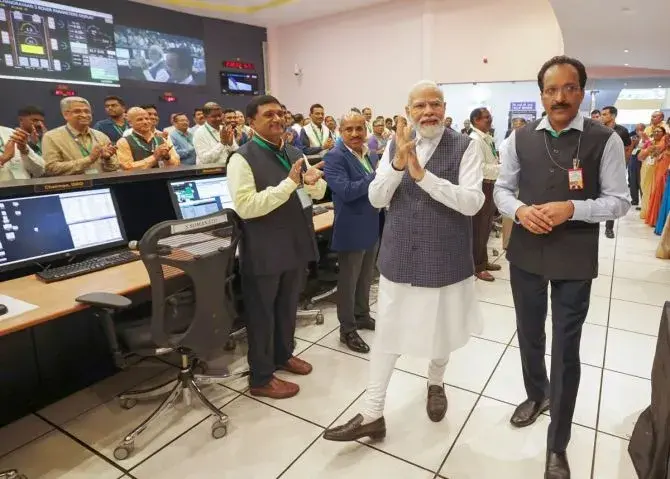From bicycles to the Moon: NCERT brings India’s space journey into classrooms
India’s space story — from humble beginnings of carrying rocket parts on bicycles and bullock carts to achieving landmark missions like Chandrayaan, Mangalyaan, and the upcoming Gaganyaan — has now been woven into NCERT’s new learning modules. The special set of two modules, titled “India: A Rising Space Power”, traces the evolution of the Indian space programme. It begins with the creation of the Indian National Committee for Space Research (INCOSPAR) in 1962 under Dr. Vikram Sarabhai, which later transformed into the Indian Space Research Organisation (ISRO), now counted among the world’s top space agencies. One of the modules highlights how India’s first rocket was so lightweight that its parts were transported using bicycles and bullock carts. Scientists avoided motorised vehicles since their electric and magnetic fields could interfere with delicate instruments, proving that simple means ensured success. The modules also honour India’s astronauts — Squadron Leader Rakesh Sharma, who became the first Indian in space in 1984, and Group Captain Shubhanshu Shukla, who in June 2025 became the first Indian to live aboard the International Space Station. They feature a quote from Prime Minister Narendra Modi: “Space may seem distant, but is an integral part of our daily life… India’s space programme is a perfect example of our vision of Scale, Speed and Skill.” Key milestones listed include: Chandrayaan-1 (2008): Discovered water molecules on the Moon. Mangalyaan (2013): Made India the first Asian nation to reach Mars, and the only country to succeed on its maiden attempt. Chandrayaan-2 (2019): Though its lander was lost, the orbiter continues to provide valuable lunar data. Aditya-L1 (2023): India’s first solar observatory at Lagrange Point-1, dedicated to studying the Sun and solar storms. Looking ahead, the modules also highlight the NASA-ISRO NISAR satellite, expected to deliver high-resolution global data every 12 days on ecosystems, glaciers, and natural disasters. Source: PTI
From bicycles to the Moon: NCERT brings India’s space journey into classrooms Read More »


